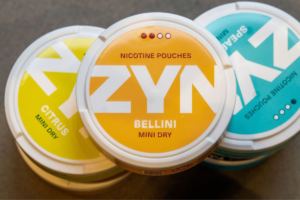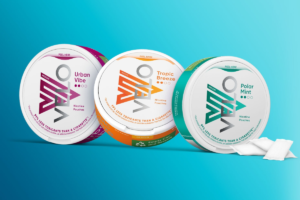Snus and Dip are two types of smokeless tobacco products that are popular for their unique attributes and ways of consumption. This paper seeks to discuss the major differences and similarities between Snus and Dip, analyze it technically and professionally. In this article we will discuss some basic information about dip and snus such as their origin; process of making; how they are used by different people; health concerns resulting from its use and finally the laws governing it The following comparison will help to dispel myths associated with each product while pointing out its specific application areas hence enable both users of these commodities as well as stakeholders in this industry to make informed choices.
What is Snus and How Does it Differ From Dip?
Definition and Composition of Snus
Snus, which is moist and unlike other smokeless tobacco products from Sweden is a smokeless tobacco product that is placed under the upper lip while providing nicotine without spitting. Snus’s composition varies greatly when compared to Dip and other kinds of tobacco mainly due to its specific making process and ingredients.
The components contained in Snus include:
- Ground Tobacco: The main ingredient for Snus is finely ground choice of tobacco leaves which differs from Dip with its rather crushed coarse tobacco.
- Water: This help in retaining moisture within the product, activating nicotine and flavouring.
- Salt: Besides being used as preservative for increasing the shelf life of Snus, salt also enhances oral mucosal absorption of nicotine.
- Humectant: These are substances like propylene glycol that ensures there is no water loss from inside to keep it moist enough not to dry out.
- Flavorings: Generally, different flavors can be employed in snus ranging from traditional bergamot and licorice to modern developments that will appeal customers with different tastes.
- pH Adjuster: Sodium carbonate like agents are included so as to raise the pH levels of Snus by improving bioavailability of nicotine afterwards readily absorbed into the body system.
These elements undergo blending after which they have been subjected to a particular heat treatment process different from fermentation used by Dip manufacture to kill bacteria as well as affect flavoring and nicotine level in it. The technicality behind snuff production indicates how it occupies an exclusive space among smokeless tobacco products since it serves as an alternative form of smoking causing less harm but has distinctive consumption practices plus content.
Comparing Snus and Dip in terms of Production Techniques
Snus and Dip have similar production processes with some notable differences, mainly because of the intended uses and consumption styles that define the two products. The manufacture of snus involves pasteurization as a way to kill bacteria and keep the product from spoilage without fermentation. This allows it to stay longer in the shelf while maintaining a consistent taste and nicotine level thus making it different from other types of this product. In contrast to that, dip goes through fermentation process where microbial actions occur naturally on tobacco leaves. These techniques improve tobacco flavor but they may lead to differentiation in taste between patches.
Moreover, there is also notable difference in the granulation of tobacco for both products. Snus utilizes finely ground tobacco which gives its texture a mild and uniform nature thus enabling it to be placed under the lip without spitting being required. On the contrary, coarse cut or long cut is typically used for dip which can affect both texture and mode of use often necessitating spitting due to saliva build up over time.The variations observed during these procedures underscored more on user preferences as well as health concerns considered by manufacturers when serving various markets. These technical processes ensure each item is optimized for a specific use reflecting deep insight into customer habits and how nicotine enters their bodies biologically.
Nicotine Levels In Snus Vs Dip
Their nicotine contents play an immense role in what makes them attractive and influential on users, given that every type has its particular level because of manufacturing procedure adapted by producers. As snus is pasteurized, it tends to give off nicotine at regulated rate thereby enabling smooth usage experiences. Different brands might vary regarding exact levels although they are generally designed not too strong so as not overpower smokers; rather they should just satisfy their craving need. Due to fermentation method, dip may contain varying amounts of nicotine compared with others. This creates stronger initial effects after taking breath fulls they are looking for. But, since the levels fluctuate from one brand to another, dip users might experience higher inconsistences than those using snus. Knowledge of these differences is important so that consumers can make informed choices based on their preferences for nicotine and anticipated experiences. Nicotine content undergoes thorough testing to ensure uniformity and compliance with legal requirements hence making them easier for users to choose between them.
Health Implications of Using Snus and Dip
Smokeless Tobacco Impact on Oral Health
The usage of smokeless tobacco products, like Snus and Dip, is a major issue in oral health due to the fact that mucosal tissues are directly exposed to strong chemicals and nicotine. From a clinical standpoint, one’s consistent utilization of these items causes several oral health problems such as leukoplakia which is characterized by white patches or spots in the mouth that may go on to become malignancies. Another anticipated outcome is gingival recession (gum recession) resulting from constant irritation caused by tobacco products leading heightened tooth sensitivity and increased susceptibility to tooth decay as well as periodontal disease. In addition, recent studies indicate higher rates of oral cancer particularly around areas where the user typically places the product inside their mouth. The presence of nicotine and other chemicals in smokeless tobacco products contributes to constricting blood vessels thus negatively affecting gum tissue health and impairing the ability of oral tissues to regenerate and repair themselves. Moreover, abrasive substances found in these products can increase enamel wear out causing cavities and tooth decay more than before. It is important for users of smokeless tobacco to have regular dental check-ups so that they can detect any early signs of deterioration in their teeth early enough.
Comparative Analysis between Snus and Dip for Nicotine Absorption
The comparison between Snus and Dip has revealed fundamental differences regarding their makeup as well as how they are used thereby influencing the rate at which nicotine enters the body system. Snus is a type of Swedish smokeless tobacco derived mainly from air-dried tobacco which is placed under-upper lip for slow absorption nicotine process.Snus pasteurization process together with its moisture content results into slow controlled release of nicotine compared with other forms of snuff.
On the contrary, dip commonly used in USA undergoes fire curing processes followed by placement between lower lip and gum regions . Physical attributes of dip plus its location within an individual’s mouth make it absorb nicotine faster due to closer approximation with the mucous membranes and the availability of higher levels of free nicotine. Differences in pH levels between Snus and Dip are also important in determining nicotine bioavailability since dip generally has a higher pH which enhances nicotine’s absorption efficiency.
Health professionals as well as end users must comprehend the kinetics of nicotine absorption as an essential element that affects addiction potential and health risks associated with smokeless tobacco use. While both products pose significant health concerns, different rates of their absorption might affect consumer behavior and addiction likelihood. Consequently, public education regarding such disparities together with other inherent risks embedded ought to be provided so that individuals can make sound choices whenever they want to use smokeless tobacco.
Some Possible Health Risks from Continuous Usage of Snus and Dip
Snus and Dip An extended use of both snus and dip highly increases diverse health dangers. These products are commonly linked to oral health problems such as gum disease, tooth decay, and high risk of oral cancer due to tobacco’s presence of carcinogenic substances. Ingestion of nicotine also leads to increased heart rate and blood pressure that contributes significantly to the development of cardiovascular diseases. Nicotine is also addictive which can make quitting difficult thereby leading to consumption of other tobacco forms. Chronic use of smokeless tobacco is responsible for gastrointestinal disorders, which can lead to type 2 diabetes mellitus as well. The knowledge about these potential health consequences is essential in order for users and medical workers could reduce damaging outcomes in terms of public health care plans in relation to the reduction in prevalence rates regarding smokeless tobacco usage be better off .
Regulatory Framework: Snus vs. Dip
Snus and Dip tobacco control policies
Snus and dip are smokeless tobacco products which may have health implications. It is for this reason that there are several strategies put in place by different countries to control them.
- Marketing Restrictions: Several jurisdictions impose strict guidelines on the advertising of tobacco products limiting their exposure especially to minors. This involves a prohibition on all promotions, and sponsorship activities related to smokeless tobacco products.
- Health Warning Labels: For consumers to be aware of the potential risks associated with the consumption of Smokeless Tobacco, it should be mandatory for every package be marked with appropriate warning labels. The nature of these labels such as their size or what picture should they bear will depend on national regulations.
- Sales Restrictions: These aim at reducing smoking habits among young people. In many cases, legislation prohibits the sale of Snus and Dip near schools and playgrounds; minimum age limits often apply as well.
- Taxation Policies: High taxes on Tobacco Products are aimed at making it expensive hence discourage its use. Taxes applied on snuff can vary widely but generally try to make these commodities less attractive economically.
- Product Composition Regulations: Some countries have enshrined in law certain requirements for smokeless tobacco products’ composition. They include nicotine, tar, and carcinogenic nitrosamine limits which are intended to minimize health risks associated with using them.
- Educational Campaigns: Public health programs usually involve campaigns meant to sensitize the public of dangers associated with use of smokeless tobacco products such as snuff (snus). These campaigns rely heavily upon evidence-based research studies that change societal perception thus resulting into less consumption.
All these policies contribute significantly towards curbing the use of Snus and Dip thereby minimizing health effects attributed to their usage. Their effectiveness lies in how they are enforced by relevant authorities plus public adherence to them. Regular monitoring as well as research assist in evaluating impacts made by them guiding future policy interventions too.
Comparing Marketing Strategies for Snus and Dip
Over the years, marketing strategies employed for Snus and Dip have changed substantially to adapt to regulatory frameworks as well as shifting consumer tastes. A notable difference in the approach to marketing of these products is in relation to their target demography and perceived usage occasions.
Snus which is often marketed as a clean alternative for smokeless tobacco or dip users who hate spitting, its packaging and adverts are usually smartly designed targeting a health-conscious audience searching for smoking alternatives. Generally, snus does appeal to a modern user in this case; it will be marketed by showing that it is discreet because it doesn’t burn.
On the other hand, Dip has generally been focused on traditional masculine rituals associated with tobacco use that includes spitting acted out on its labeling. Packaging for this product tends to be rougher, reflecting consumers who appreciate dipping’s heritage. For instance, when trying to sell dip, they will target clients who desire various flavors that are intense so as to give them tough lasting taste of tobacco.
Both marketing strategies are heavily influenced by legal regulations which restrict how and where these goods can be promoted. However, within these constraints, companies strive to differentiate their products by aligning with their target consumers’ lifestyles and values. To reach such audiences through digital media becomes important due to limitations of conventional advertising using this method these companies can engage directly with them through social platforms like Twitter or Facebook.
Understanding these varied marketing tactics sheds light on the positioning of Snus and Dip within the larger universe of tobacco brands. It highlights the significance of brand development along with consumer perception within the competitive realm of non-smokeable prod
Public Health Initiatives to Stop Smokeless Tobacco Use
Public health initiatives to stop smokeless tobacco use have increasingly emphasized education, regulation, and support for cessation efforts. An example is the United States’ Centers for Disease Control and Prevention (CDC) which both run extensive programs including public awareness campaigns on the dangers of smokeless tobacco such as mouth cancer, gum disease as well as dependency. Most of these digital-based activities are aimed at young people who easily fall prey to advertisement by smokeless tobacco companies. In this case, most jurisdictions have prohibited flavored smokeless tobacco brands that specifically attract novice users. Assistance for individuals willing to quit smokeless tobacco include nicotine replacement therapies (NRTs) and counseling services as well. According to research, combining regulation, education and support is an effective approach in reducing the consumption of smokeless tobacco products. Results published in American Journal of Public Health showed that such integrated public health strategies significantly decreased the prevalence of smokeless tobacco use among adolescents and young adults.
Consumer Perspectives: Preferences for Snus or Dip
Factors that can influence the choice between Dip and Snus
Different elements like product characteristics, perceived dangers on health and cultural phenomena play a vital role in shaping individual preferences within the smokeless tobacco market. For example, product attributes have been observed to be very crucial when considering which is better between Snus and dip. While snus is often seen as a cleaner option; it is typically sold in small pouches designed for discrete consumption without spitting. On the contrary, using Dip requires one to spit out saliva produced during its use thus may seem less convenient or socially unacceptable. Consumer decisions are also influenced by perceived health risks. Some users think of it as a safer alternative compared to dip because it undergoes pasteurization which many people believe reduces harmful constituents yet all tobacco products pose significant health risks. Cultural influences cannot be overlooked, as dip has a deep-rooted association with certain lifestyles and communities especially within rural and southern regions in the United States while snus is commonest in Scandinavian countries. This knowledge will enable industry stakeholders and public health officials to effectively address consumer behavior by developing strategies for promoting health and cessation of tobacco use.
Snus and Dip Users’ Experiences And Satisfaction Levels
The experiences that users have had with Snus or dip vary greatly depending on factors such as satisfaction levels mainly governed by its characteristics, how it was used, and personal preference among others things. Those who choose snus often appreciate its ease of use; no need to spit; & discreetness as features that lead to their satisfaction. It therefore appeals more to those who would rather used smokeless tobacco products they could consume everywhere without feeling uncomfortable or judged.
On the other hand, dip users generally consider the traditional aspect of the product & ritualistic method for utilizing it as major components contributing towards their satisfaction. The tactile sensation accompanying palpable handling at hands, stronger taste experience resulting from robust flavors of this smokeless form of tobacco utilization process and nicotine supply are some of the explanations given by customers for their preferred choice over Snus. However, it is important to remember that while some users express high satisfaction levels with their chosen product due to these attributes, dissatisfactions or concerns about nicotine deliveryh concerns or the social implications of use.
In talking about satisfaction levels, it is essential to consider the impact of nicotine dependency on continued product utilization. Thus, depending on a person’s preference between snus and dip; the change in nicotine intake can actually influence how they feel when using such drugs. From a technical point of view, this involves looking at what people say about their experiences with both products as well as understanding how they are made and used within cultural imperatives. This information provides insights for developing interventions in public health targeting smokeless tobacco products such as awareness campaigns, quality improvement initiatives among other strategies that will cause behavior change for tobacco cessation purposes.
Market Trends and Consumption Patterns of Smokeless Tobacco Products
Over the years, the smokeless tobacco products market has seen enormous changes due to varying consumer choices and regulatory landscapes. One observable trend is a slow shift to alternative nicotine delivery systems such as snus and nicotine pouches that are driven by growing awareness of health-related issues associated with traditional tobacco usage. This change is further supported by product development innovations and advertising strategies which are intended to address convenience, secrecy and reduced health effects.
Recent consumption patterns indicate a differentiated consumer base in which various demographics have preferences shaped by their lifestyles, cultural backgrounds and consciousness on health matters. Young adults, for example, increasingly prefer modern discreet products like nicotine pouches because they are easy to use with minimal social stigma attached. In contrast, older consumers of dip have remained stable due to its sensory satisfaction and perceived authenticity.
Statistical data from trade reports as well as health surveys show an upward trend in global smokeless tobacco market size albeit gradual implying an intact demand despite strict regulations coupled with public campaigns. Moreover, the study establishes that flavor innovation is important for capturing the attention of consumers while product safety improvements help increase market share.
Understanding these trends and consumption patterns is crucial for all stakeholders in the smokeless tobacco industry. Such understanding informs product development towards meeting evolving customer expectations; guides regulation policies that balance public health concerns with consumer autonomy; and informs public health interventions aimed at minimizing harm from tobacco use.
Reference sources
- Is Snus the same as a dip? Smokers’ perceptions of new smokeless tobacco advertising – This article from Tobacco Control attempts to understand how smokers perceive Snus compared to chewing tobacco. It could provide insights into the key differences between Snus and dips from a user’s perspective.
- Patterns of use of smokeless tobacco in US adults, 2013–2014 – A study published in the American Journal of Public Health discusses patterns of smokeless tobacco use among US adults, focusing on Snus. This source could provide statistical data on Snus and dip usage.
- Efficacy of smokeless tobacco for smoking cessation: a systematic review and meta-analysis – This systematic review and meta-analysis from Tobacco Control compares the effectiveness of different smokeless tobacco, including Snus, for smoking cessation.
- Use of traditional smokeless, Snus, and dissolvable tobacco among US youth – This article from ScienceDirect explores various forms of smokeless tobacco, including Snus and dip, among US youth.
- Online Tobacco Advertising and Current Chew, Dip, Snuff, and Snus Use among Youth and Young Adults, 2018–2019 – This study published by MDPI investigates the impact of online tobacco advertising on the use of chew, dip, snuff, and Snus among youth and young adults.
- Multiple tobacco product use among adults in the United States: cigarettes, cigars, electronic cigarettes, hookah, smokeless tobacco, and Snus – An article from ScienceDirect discussing multiple tobacco product use, including Snus and dip, among US adults.
- A national comparison of dual users of smokeless tobacco and cigarettes and exclusive cigarette smokers, 2015–2016 – This study from Oxford Academic compares dual users of smokeless tobacco and cigarettes to exclusive cigarette smokers, providing insights into the usage habits of snus and dip users.
- Trajectories of smokeless tobacco use and cigarette smoking in a cohort of Swedish adolescents: differences and implications – This research paper from Oxford Academic provides insights into the trajectories of smokeless tobacco use in a cohort of Swedish adolescents, which could be helpful in understanding patterns of Snus and dip usage.
- A systematic review of transitions between cigarette and smokeless tobacco product use in the United States – A systematic review from BMC Public Health that explores transitions between cigarette and smokeless tobacco product use in the US, providing valuable insights into usage patterns for Snus and dip.
- Characterizing advertising strategies and expenditures for conventional and newer smokeless tobacco products – This article from Tobacco Control characterizes advertising strategies and spending for various smokeless tobacco products, including Snus and dip. It could proCharacterizinginto the marketing strategies for these products.
Frequently Asked Questions (FAQs)
Q: Can you explain the health effects of using Snus compared to dip?
A: Both products carry health risks because they are forms of smokeless tobacco. However, research suggests Snus might be a slightly safer option than other forms of oral tobacco use, like dip, due to its manufacturing process and lower levels of harmful chemicals. That said, all tobacco products, including Snus and dip, can have adverse health effects.
Q: Is using Snus or dip a good strategy for tobacco harm reduction if I’m trying to quit smoking?
A: Some tobacco users switch to smokeless tobacco products like Snus or dip as a harm reduction strategy because they’re perceived as safer than smoking cigarettes. However, it’s essential to understand that while the risk might be lower compared to smoking, they are not without risks. Health professionals often recommend nicotine replacement therapies that are FDA-approved for quitting smoking.
Q: What does “pouch” refer to in the context of Snus and dip?
A: A “pouch” refers to a small, tea bag-like packet containing the tobacco product. Snus, for example, comes in pouches that tobacco users place under their upper lip. This makes it more discreet and easier to use, eliminating the need for spitting. Dip can also come in pouches, but the traditional dip is usually sold as a loose, moist tobacco that users put directly into their mouth.
Q: Are the flavors of Snus different from those of dip?
A: Yes, a variety of flavors are available for both Snus and dip, but the range and type might differ. Snus products, especially those from Sweden, often come in traditional and distinct flavors like bergamot, mint,, and other fresh flavors. American smokeless tobacco or dip products usually focus on mint, wintergreen, and fruit flavors. The availability of flavors can influence the preference among smokeless tobacco users.
Q: What’s the historical background of Snus and dip? How have they evolved?
A: Snus originated in Sweden in the early 18th century and has evolved into a popular smokeless tobacco product among Swedes, known for its specific manufacturing process and use. Dip or moist snuff, more common in the United States, evolved from traditional chewinDipobacco and became widespread in the 20th century. Both products have adapted over time, with manufacturers introducing various flavors and types to cater to different preferences of tobacco users.
Q: How do the rules and regulations around Snus and dip differ?
A: Regulations surrounding the sale and use of Snus and dip vary by country, mainly due to differences in how each government perceives the health effects of smokeless tobacco. For example, the European Union has restrictions on the sale of Snus, whereas, in the United States, both Snus and dip are regulated but are legally sold with warning labels about the health risks. Users need to be aware of their local laws regarding the sale and use of these products.
Q: Does the nicotine content differ between Snus and dip?
A: The nicotine content can vary significantly between snus and dip products, depending on the brand and type. Typically, snus products are formulated to release nicotine over a more extended period, which can provide a more consistent experience for the user. Dip, on the other hand, might offer a quicker release of nicotine. Users should be aware of the nicotine content and understand how it might affect their oral tobacco use.












